Busting Car Myths That We’ve Believed For Far Too Long
If you’re a car owner, you’ve probably heard phrases such as “SUVs are safer compared to smaller units,” or “Warm up your engine before driving, especially during the winter season,” or even to “use premium gas if you want to maintain a clean engine.”
But how accurate are these pieces of advice? Apparently, not very. Which begs the question: how many of the common car myths below do you still subscribe to? Read on to figure out if your beliefs are myth or fact?
Use Premium Fuel for a Cleaner Engine: Myth or Truth?
Years ago, high performance engines had high compression ratios and need high performance fuel. The degree to which it affected the car’s performance was tangible.

Source: Joe Raedle/Getty Images
Nowadays, cutting cost on a high performing engine by not filling up with premium gas is cost-efficient in the present, but not good down the road (those engines are expensive). But if you have a regular sudan taking your kids to school or headed to work, don’t sweat.
Verdict: It’s complicated
Placing a Car’s Battery on Concrete Damages It, Myth or Truth?
According to this myth, putting a car battery on concrete will cause irreparable damage and drain the life out of it. Placing it on concrete may have drained all of its power in the early days of batteries, nearly a century ago, but not today.

Source: Jeffrey Greenberg/Universal Images Group via Getty Images
Placing it on concrete may have drained all of its power in the early days of batteries, nearly a century ago, but not today. What really drains a battery is having the battery sit for too long.
Verdict: Myth
An American Car Means American Made, Truth or Myth?
When you hear the term “American made car” it may lead you to believe that the car was conceptualized, built, and produced in America.

Source: HOANG DINH NAM/AFP via Getty Images
What it really means is that the car was designed in the states. Some parts are outsourced to foreign countries due to it being more fiscally smart. American cars can also be manufactured for that same reason.
Verdict: Myth
You Can Fill Your Car With More Gas During the Day
This myth is based on the idea that gas is denser after a cold night, allowing you to get more gasoline for each gallon you pump into the tank. While it is true that gasoline expands as the temperature rises, this myth is untrue.

Source: Joe Raedle/Getty Images
Consumer Reports put this idea to the test and found that the density of gasoline is unaffected by the ambient temperature. This is due to the fact that gasoline is stored in deep underground tanks and its density remains constant throughout the day.
Verdict: Myth
Low Mileage Cars Are Always Good, Truth or Myth?
When searching for a new car we often think that the car with the lowest mileage is the best option, and usually this would be correct if not for one caveat. You must make sure that the car hasn’t been sitting for a long period of time. A good engine is an engine that has been used on a regular basis.

Source: 975now.com
To make sure you’re avoiding a lemon you must thoroughly inspect the car, including under the hood, and check its title for its history. A car that has sat for too long could have a reliability issue with the battery or reasons not immediately clear.
Verdict: It’s complicated
Hybrids Are Slow, Truth or Myth?
Hybrids weren’t just slow to catch on when they first appeared on the market, they were sluggish. The 2001 Toyota Prius was an excellent example, taking more than 12 seconds to reach 60 mph. However, in just a few decades, hybrids have advanced significantly.

Source: JUNG YEON-JE/AFP via Getty Images
Hybrid batteries are now more fuel-efficient, powerful, and speedy. The SF90 Stradale is Ferrari’s fastest automobile and the world’s fastest hybrid. It has a top speed of nearly 210 mph and can accelerate to 60 mph in less than 2.5 seconds!
Verdict: Myth
Tap Water Can Be Mixed With Coolant, Myth or Truth?
Everyone has heard at some point that combining tap water and coolant in the radiator is totally safe for your vehicle. Coolant can be mixed with distilled water, but it should never be mixed with bottled or tap water.

Source: Education Images/Universal Images Group via Getty Images
Unlike distilled water, tap or bottled water contains minerals. Mineral deposits in the radiator and cooling channels of the engine can cause overheating and eventually, catastrophic engine damage. To top off your coolant use only pure, distilled water.
Verdict: Myth
If You Run Over a Nail, You Need a New Tire, Myth or Truth?
It is a common misconception that once you run over a nail and it pieces your tire you automatically need to buy an expensive new tire. We have good news—there are exceptions! As you can see by the picture above, if the nail is on the outside of the tire, you’re out of luck.

Source: Discount Tire
On the flipside, if it is in the center–rejoice! An auto repair shop may be able to simply patch your tire and send you on your way.
Verdict: It’s complicated
Dirty Cars Are More Fuel Efficient, Myth or Truth?
Apparently, the theory behind this one is that dirt and mud fill the cracks and crevices in the car, enhancing airflow and cutting drag. Even the Mythbusters set out to test this notion, so it doesn’t seem completely ridiculous.

Source: Markus Gilliar-Pool/Bongarts/Getty Images
The legend was debunked, as you might expect. Because dirt decreases aerodynamics and alters airflow, dirty cars are up to 10% less fuel-efficient than clean cars. If your car has been laboring under the weight of this myth, you should take it to the carwash as soon as possible.
Verdict: Myth
Coolant Color Doesn’t Make Any Difference, Myth or Truth?
You might have been under the impression that coolant color makes no difference and we are here to tell you that this impression is wrong. It is important that you do not mix coolants with different colors and formulations, this can cause dilution of the inhibitors and lead to corrosion.

Source: facebook
Figure out what the OEM recommended coolant is for your vehicle and use this. If you have a new car, figure out what coolant formulation is already in your car.
Verdict: Myth
An Oil Change Is Necessary Every 3,000 Miles, Myth or Truth?
Oil changes are normally recommended every 3,000 miles by car dealers. Oil and filter changes were once required on a regular basis to keep the engine in good working order.

Source: Paul Aiken/Digital First Media/Boulder Daily Camera via Getty Images
Most vehicles can now be safely driven with oil replenishments every 7,500 miles, thanks to developments in engine durability and oil quality. Oil changes are recommended every 10,000 miles by several manufacturers, such as Ford and Porsche. If you use synthetic oil in your car, you can go up to 15,000 miles between oil changes!
Verdict: It’s complicated
All SUVs Are Specially Designed for Off-Road Adventures
SUVs were originally designed to operate effectively both on and off smooth terrain. They were a hybrid of normal road automobiles and off-road vehicles. SUVs have evolved significantly in recent years. Their wheels grew in size, and they were outfitted with a variety of futuristic technologies: massaging seats, TVs, and eco-friendly systems.

Source: Mark Elias/Bloomberg via Getty Images
Manufacturers these days no longer focus on building their SUVs with off-road capabilities. However, a few outliers, such as the new Mercedes G Class, remain unstoppable in snow, sand, or mud.
You Should Wipe Your Oil Filter Clean, Myth or Truth?
When changing your oil filter yourself, it is a common mistake to think you should wipe the filter dry of oil. Doing this will actually create a loose fitting seal. This may end up making the seal fall off and spill your oil all over the place.

Source: liveinternet.ru
Instead, after you fill your filter with oil, be sure to spread a bit of excess oil around the filter’s seal before you install it.
Verdict: Myth
Coolant Hoses Don’t Need Replacement, Myth or Truth?
A common problem that vehicle owners experience is looking at their coolant hoses that look good on the outside, yet have deteriorated on the inside.The inner walls of the hoses will harden and negatively affect their ability to absorb the vibrations of the engine (which is what the hoses are designed to do).

Source: facebook
To avoid this, always make sure that your hoses are checked at your regular services, and if they do need to be replaced, ensure that you are replacing them with quality parts.
Verdict: Myth
Starting an Engine Consumes More Fuel than Leaving it Idle
Another widespread belief among automobile owners is that keeping the engine running when the vehicle is still for more than 30 seconds saves fuel. This is based on the fact that starting a car consumes more fuel than idling it.

Source: Andrew Lichtenstein/Corbis via Getty Images
Modern fuel injection systems are extremely efficient, requiring far less gasoline than is required to keep the engine running. Unless your vehicle has a carburetor, turn off the engine the next time you’re stopping somewhere for more than 30 seconds to save petrol.
Verdict: It’s complicated
You Can Use Plain Water Instead of Coolant, Myth or Truth?
This is a big no-no and can outright wreck your engine. Water is corrosive and will rust your car, which will lead to engine failure. Water also has a low boiling point so it is a horrible substitute for coolant as it will overheat your engine in a warm climate.

Source: whatisall.com
And in the colder climates? The water can freeze and create blockages in the radiator veins and affect your cooling system. Most coolant manufacturers will recommend using a 50/50 mix of water and ethylene glycol.
Verdict: Myth
You Can Use Your Phone When Pumping Gas, Myth or Truth?
Do you remember when mobile phones were first introduced? They were big and heavy, with long extendable antennae. This myth could have been accurate at the time. A tiny discharge from a phone’s antenna could ignite the fuel, causing a fire or a spectacular explosion.

Source: EDMOND SO/South China Morning Post via Getty Images
Although there are no documented incidents to back this up, it wasn’t impossible. Internal antennas are now standard on most phones, and it has been demonstrated beyond reasonable doubt that wireless signals from modern phones do not ignite gasoline.
Verdict: Truth
Performance Chips Affect Your Car’s Power, Myth or Truth?
If you’ve ever considered buying a powerful car, you’ve most likely come across the “low-cost performance chips” that promise to boost horsepower. As it turns out, the majority of these chips are useless. These plug-and-play chips are said to quickly boost your power. Is that even possible?

Source: FRED DUFOUR/AFP via Getty Images
To enhance power, you’d be far better off having your Engine Control Unit modified or even getting mechanical engine improvements. In any case, rather than squandering money on a performance chip, ask your local tuning shop for guidance.
Verdict: Myth
Cash Payment is Always a Better Deal, Myth or Truth?
The majority of people believe that when buying a new car, you should always pay cash. Why? When paying cash, some customers expect a discount on the sticker price.

Source: Fairfax Media via Getty Images via Getty Images
If you do decide to fish for a discount, it may not be as significant as you had hoped. Having the cash ready to hand over leaves less space for negotiation. If you are certain that you will pay cash for your new car, it is better not to mention it until the price has been agreed upon.
Verdict: It’s’ complicated
Fueling Up on Off-Brand Gas Can Harm Your Engine, Myth or Truth?
It’s a prevalent fallacy that using low-cost, off-brand gasoline harms your engine. The truth, it turns out, is a little different. Off-brand gas stations, as well as major chains like BP or Shell, frequently use a refinery’s “base gasoline.” The quantity of extra additives that each brand adds makes the difference.

Source: Phil Walter/Getty Images
Additives assist in cleaning the engine. Thus a rich blend of gas would be more beneficial to your car. That isn’t to say that using non-branded gas will harm your engine. A blend with fewer ingredients must still meet regulatory criteria and will not cause damage to your vehicle.
Verdict: Myth
Replace All Four Tires At the Same Time, Myth or Truth?
Changing all four at once appears to make sense. Whether you should do so is usually determined by tire wear and your drivetrain. Front-wheel-drive and rear-wheel-drive vehicles typically require two tires to be replaced.

Source: Will Lester/Icon Sportswire via Getty Images
However, all-wheel-drive vehicles require the full set to be changed. Differentials in all-wheelers transfer the same amount of torque to each wheel, therefore a different size tire can cause the differential to work too hard, potentially damaging the powertrain.
Verdict: It’s complicated
Keeping Your Coolant Full Is Enough, Myth or Truth?
It is a commonly held belief that keeping the coolant tank full is the most important factor in coolant management. This is incorrect. The quality of your coolant is equally as important. Coolant deteriorates the same as the engine oil, making regular coolant flushes deeply important.

Source: facebook
Just draining out old coolant and refiling the reservoir is not enough. Contaminants that build up in the system need to be removed. High-quality coolant will protect your vehicle from corrosion and future damage.
Verdict: Myth
Keeping a Vehicle Warranty Valid Doesn't Matter, Myth or Truth?
AAA found that 31% of people believe that to uphold a vehicle warranty, all services have to be performed at the dealer.

Source: Autotrader
However, this is not true. Consumers can have regular maintenance and repairs done at whichever facilities they choose. Consumers always need to document any work that is done by another facility other than the dealer or manufacturer in order to maintain the warranty.
Verdict: Truth
A Small Leak In Your Coolant is Okay
If you see coolant leaking from under your car, you need to take notice. A leak in the coolant reservoir needs attention, as it will eventually crack open and can possibly lead to permanent damage. If the issue is a leaky hose, it will eventually blow out and dump out all of your coolant.
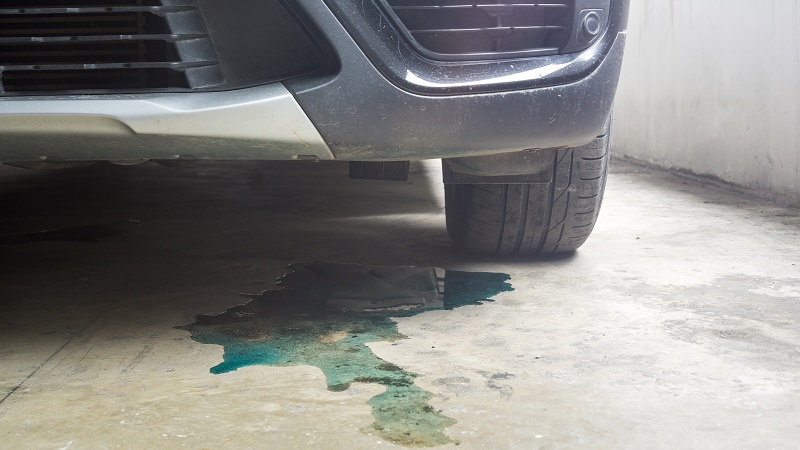
Source: carparts.com
This kind of avoidable mishaps can end up costing the big bucks. Furthermore, it is also against the law to dump coolant into surface waters, as they have poisonous content and can contaminate bodies of water nearby. Save your wallet and the environment from suffering.
Verdict: Myth
A Smaller Car Means Less Fuel Consumption, Myth or Truth?
It’s reasonable to suppose that a little car will consume less fuel than a large one. Large automobiles are typically heavier, less aerodynamic, and equipped with more powerful engines.

Source: Charley Gallay/Getty Images for Playboy
Downsizing will have significant impact on fuel efficiency. Most SUVs currently have smaller engines than in the past, and aspirated engines are unusual nowadays. It should be noted that large cars have also gotten much more aerodynamic over time, resulting in better fuel economy. The 2019 Toyota RAV 4 is a good example, as it can score over 35 MPG on the highway.
Verdict: Truth
A 4WD Needs Snow Tires In Snow, Myth or Truth?
While a four-wheel-drive system aids in driving in the snow, there’s no substitute for snow tires. In the snow, a 4WD accelerates more quickly, but adequate tires are required to maneuver with control and brake quickly.

Source: Alessandro Di Ciommo/NurPhoto via Getty Images
Summer tires simply won’t grip the snow in an emergency brake, which can cause the vehicle to roll out of control. Make sure you have good snow tires the next time you go skiing in the mountains. Even if your car isn’t equipped with 4-wheel drive, the tires should work well enough.
Verdict: Truth
Engine Warm-Up is a Must, Myth or Truth?
This is one of the most widely accepted falsehoods on the list. Many people believe that idling a car before driving is essential, especially on a chilly winter day. Although it takes some time for an engine to attain its proper operating temperature, idling to do so is absolutely unnecessary.

Source: Alex Livesey/Getty Images
A modern car has the technology to automatically warm up the engine and will reach the appropriate running temperature faster when driven rather than standing still. Doing this simply wastes fuel and emits an excessive amount of carbon monoxide. The reason people do this is to warm up the interior of the car.
Verdict: Myth
Every Time You Change Your Oil, Flush Your Coolant, Myth or Truth?
When was the last time you flushed your car’s coolant? It should be done every time you change your oil, according to this misconception. It is, however, entirely needless to do so on a regular basis because it will not improve the durability of your cooling system and will only cost you more money.

Source: PHILIPPE HUGUEN/AFP via Getty Images
Coolant should be changed every 60,000 miles, or once every five years, according to most manufacturers. Check your coolant level on a regular basis; if the level drops suddenly, there could be a leak somewhere.
Verdict: Myth
Vegetable Oil Can Be Used In Diesel Cars, Myth or Truth?
If it’s a diesel, a 50-year-old tractor will probably run OK on cooking oil. However, the engineering behind an old diesel engine is far less complex than in modern cars, and pouring cooking oil into your modern tank can have dire repercussions.

Source: Mel Melcon/Los Angeles Times via Getty Images
The difference in viscosity between vegetable oil and petroleum diesel is what causes the problem when using it to power a modern diesel engine. Because vegetable oil is so thick, the engine will be unable to atomize all of it properly, resulting in an excessive amount of unburned gasoline.
Verdict: Myth
Fuel Is Wasted When Using a Start-Stop System, Myth or Truth?
By flicking the engine on and off, a car’s start-stop system actually increases fuel consumption, or so the idea goes. On top of that, it’s said that using the system can permanently destroy a car battery.

Source: Pixabay / Ri_Ya
This is not true. Cars with a start-stop system can save up to 15% more petrol than cars that do not use the system, according to testing. Because a start-stop system reduces emissions and is completely safe for the car’s battery, you should throw this misconception out.
Verdict: Myth
Red Car Attracts More Attention, Myth or Truth?
This is yet another myth that arose from the overabundance of exotic red cars a few years ago. Although some studies have shown that particular kinds of automobiles are more likely to be pulled over than others, there is no indication that a red car would be pulled over more frequently.

Source: Tim Graham/Getty Images
Exotic cars, it could be argued, are more prone to traffic offenses and, as a result, are stopped more frequently, as well as standing out more and drawing in more attention.
Verdict: It’s complicated
Dishwashing Soap Can Be Used to Wash Your Car, Myth or Truth?
It’s a horrible idea to wash your car with dishwashing soap or just about any chemical that isn’t designed for autos. Using detergent or soap might save you a few pennies; however, it will peel the wax and damage the paint.

Source: Pixabay / Pixelpower-01
Cars with paint damage will need to be repainted, which can set you back at least $500 for a single coat of low-quality paint. Paint jobs of higher quality will almost certainly cost you more than $1,000. Think long-term and spend a little extra money on excellent car care now.
Verdict: Myth
Aluminum is Safer Than Steel, Myth or Truth?
There’s a density difference between aluminum and steel. If automobile manufacturers replaced steel with the exact quantity of aluminum, It would be less safe. This is why carmakers go to great lengths to ensure that aluminum vehicles are as safe as steel vehicles.

Source: Patrick Aventurier/Getty Images
Automakers utilize more aluminum to compensate for the density difference by increasing the thickness of the vehicle. Various sites, notably Drive Aluminum, claim that an aluminum body is safer than a steel body. Aluminum has a higher crush zone than steel and absorbs energy better on impact.
Verdict: Truth
Korean Companies Manufacture Low-Quality Cars, Myth or Truth?
Busted. Korean brands such as Hyundai and Kia are currently ranked first in the J.D. Power Dependability Study, beating out Japanese brands such as Honda and Toyota. Because the market is so competitive, Korean cars are built to be more dependable, more fuel-efficient, and less expensive than the products of their competitors.
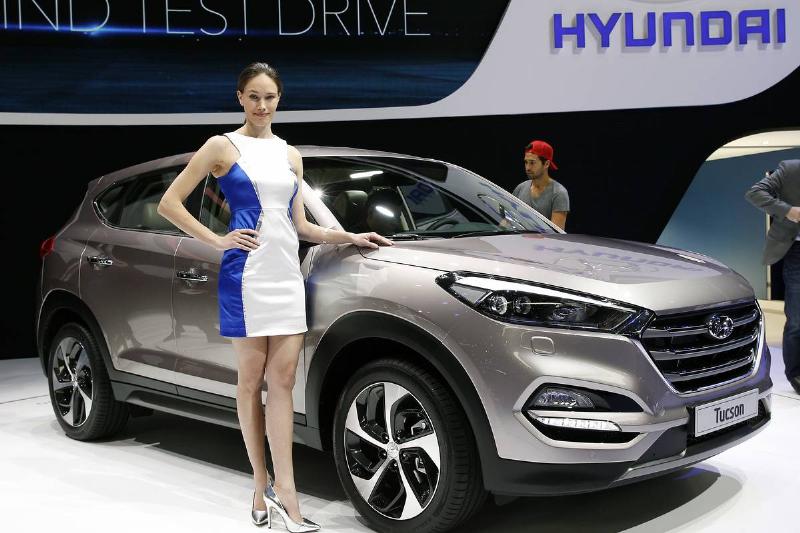
Source: Chesnot/Getty Images
Customer satisfaction is measured by the ACSI Automobile Survey, which considers reliability, driving performance, and a variety of other factors. Hyundai was ranked among the top 20 automobile manufacturers and is also ranked in the top ten automobile brands by J.D Power.
Verdict: Myth
SUVs Are Better Than Smaller Units, Myth or Truth?
“A larger, heavier vehicle provides superior collision protection than a smaller, lighter vehicle, assuming [there are] no other changes,” according to the Insurance Institute for Highway Safety. SUVs have a higher center of gravity, which makes them more likely to roll over on tight turns or during the event of a crash. Even though SUVs have larger brakes, they require a longer braking distance to stop.

Source: Michael Kovac/WireImage
Even though SUVs have larger brakes, they require a longer braking distance to stop.Still, automobile manufacturers are working hard to improve the safety features of their SUVs by installing various traction and stability systems as well as powerful brakes.
Verdict: It’s complicated
Your Dead Battery Can Be Resurrected With A Jump, Myth or Truth?
You know this myth is false if you’ve ever had to jump-start your car when the battery died. It’s preferable to keep the engine running after jumping-starting a dead battery. When traveling in the winter, a dead battery can take hours to recharge.

Source: Helen H. Richardson/The Denver Post via Getty Images
The battery is used to power accessories like the car radio and lights, which lengthens the time it takes to fully recharge the battery. For a depleted battery, using a car battery charger is a better option.
Verdict: It’s complicated
Electric Cars Are Prone to Start Fires, , Myth or Truth?
One myth concerning electric vehicles is that they are more prone to catching fire than gasoline-powered vehicles. In recent years, a few electric car fires have made international headlines, and the myth continues to spread.

Source: BORIS HORVAT/AFP via Getty Images
Although a broken lithium-ion battery might generate heat and cause a fire, gasoline is much more flammable. Based on the rate of car fires per one billion miles driven, Tesla claims that a gasoline-powered car is 11 times more likely to catch fire than an electric car.
Verdict: Myth
Low Tire Pressure Makes for a Smoother Ride, Myth or Truth?
Some car owners lower their tires on purpose hoping for a smoother ride. RV and truck owners are particularly prone to this harmful behavior. Not only does it reduce comfort, but underinflation reduces fuel efficiency and can pose a major safety risk.

Source: Angelika Warmuth/picture alliance via Getty Images
Low tire pressure causes more of the tire’s surface to contact the road, resulting in more friction. Overheating occurs, which results in early tire degradation, tread separation, or even rupture. Underinflation does not increase the smoothness of your ride. Try turning on the radio instead.
Verdict: Myth
ABS Constantly Shortens Braking Distance, Myth or Truth?
This is another urban legend that is only half accurate, depending on the circumstances. An anti-lock brake system prevents the locking up of wheels during hard braking. It was designed to keep the driver in control of the vehicle rather than shortening the stopping distance.

Source: Raymond Boyd/Michael Ochs Archives/Getty Images
According to the National Highway Traffic Safety Administration, cars with an ABS had a 14 percent shorter braking distance on wet roads than cars without the technology. The braking distance between a non-ABS car and a car with an ABS is basically the same in normal, dry conditions.
Verdict: Myth
Having Your Tailgate Down While Driving Increases Fuel Efficiency, Myth or Truth?
In the United States, pickup trucks with their tailgates down are ubiquitous. Have you ever wondered why this is so? Some truck owners feel that driving with the tailgate down, or even completely removed, improves airflow and fuel economy.
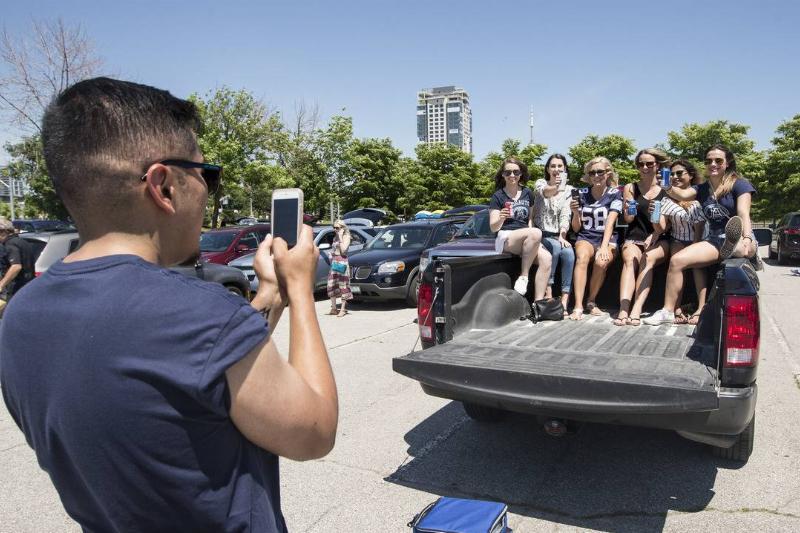
Source: Bernard Weil/Toronto Star via Getty Images
It actually has the opposite effect. When the tailgate is closed, a vortex forms around the truck bed, which enhances ventilation. Driving with the tailgate down generates more drag and has been shown to be somewhat less fuel-efficient, but the difference is negligible.
Verdict: Myth
2WD Cars Brake Slower Than 4WD Cars, Myth or Truth?
Because most four-wheel-drive cars are capable off-road, they have a significant following around the world. A widespread misunderstanding is that 4WD automobiles have lower braking distances than rear-wheel-drive or front-wheel-drive cars. 4WD vehicles accelerate more quickly on wet or snowy roads than RWD vehicles do.

Source: Matthias Bein/picture alliance via Getty Images
The braking distance of a vehicle is unaffected by an AWD or 4WD system. The braking distance, particularly on a wet surface, comes down to the type of tires used. A car with summer tires will need a longer distance to come to a stop on snow.
Verdict: It’s complicated
Boosting Into Overdrive Is Not Like the Movies, Myth or Truth?
“Shift into overdrive” is a term that appears frequently in video games, movies, and popular culture. It can be heard right before street racing scenes, dramatic car chases, or simply when your significant other wants to beat traffic. Overdrive isn’t nearly as thrilling as it is in the movies.

Source: STAN HONDA/AFP via Getty Images
It’s a unique gear that makes the car run more effectively and saves money on gas. It effectively allows the car to cruise at a high pace while maintaining a low RPM. Overdrive will not make your automobile louder, quicker, or more exciting, though.
Verdict: Truth
Bigger Engines Produce More Power, Myth or Truth?
Naturally aspirated V8 engines were used in many powerful cars back in the day. The 1970 Chevy Chevelle SS, for example, had a massive 7.4L big-block V8 that produced over 400 horsepower. These engines functioned admirably for their time, but they were far from efficient. The design of high-performance cars has been fundamentally changed by current downsizing trends.
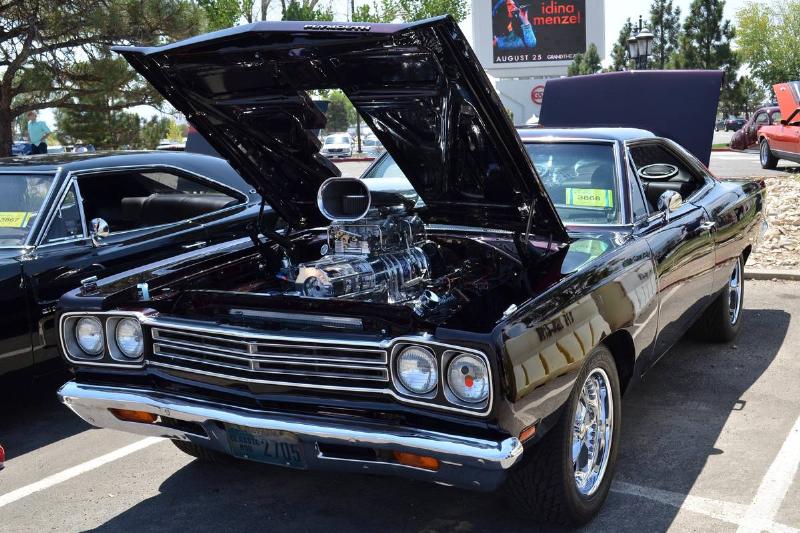
Source: Lyle Setter/Icon Sportswire via Getty Images
Instead of large engine displacement, manufacturers now opt for turbochargers. The brand new Mercedes A45 AMG, for example, produces 416 horsepower with only four cylinders and a 2-liter displacement!
Verdict: It’s complicated
Seat Belts Aren't Necessary Because of Airbags, Myth or Truth?
Some believe that a car with airbags does not require seat belts, which is as ridiculous as it sounds. Anyone who believes this tall tale is putting their life in jeopardy.

Source: Lambert/Getty Images
Airbags are a good way to protect belted passengers because their location is strategically determined by the position that the seat belt keeps them in. If you’re not fastened up, you may slide under the airbag landing zone or perhaps miss it entirely when it deploys. This could result in a collision with the dashboard or ejection from the vehicle.
See the Car Covers That TikTok is Raving About>>>
Verdict: Myth
Air Condition Increases Fuel Economy, Myth or Truth?
It’s an annual summertime driving argument. Is it more fuel-efficient to drive with the air conditioner on than to open the windows? Driving with the windows down increases drag, which ostensibly means that the automobile is consuming more fuel.

Source: Mediacolors/Construction Photography/Avalon/Getty Images
However, turning up the air conditioning puts additional strain on the engine, which uses more gasoline. When it comes down to it, opening your windows saves you a little more gas than using air conditioning. Ultimately, driving with the windows closed and the A/C turned off is the most efficient option.
Verdict: Myth
Car Crashes Are Always Lethal in Convertibles, Myth or Truth?
Because the majority of cars are hardtops or coupes, it seems reasonable to conclude that the removal of a car’s roof weakens its total structure and compromises safety. This is why manufacturers go to such lengths to make convertibles as safe as hardtops.

Source: Axel Koester/Corbis via Getty Images
Convertible automobiles have a sturdier chassis, reinforced pillars, and unique roll hoops behind the seats, all of which improve the driver’s safety in the event of a rollover. Some convertibles, like the 2016 Buick Cascada, include active roll bars that deploy automatically when the vehicle is flipped.
Verdict: Myth
Manual Cars Are More Fuel-Efficient Than Automatics, Myth or Truth?
This was true in the early days of automatic transmission. Automatics were significantly worse than manuals when they initially came out on the market. They consumed more gas and broke down more frequently.
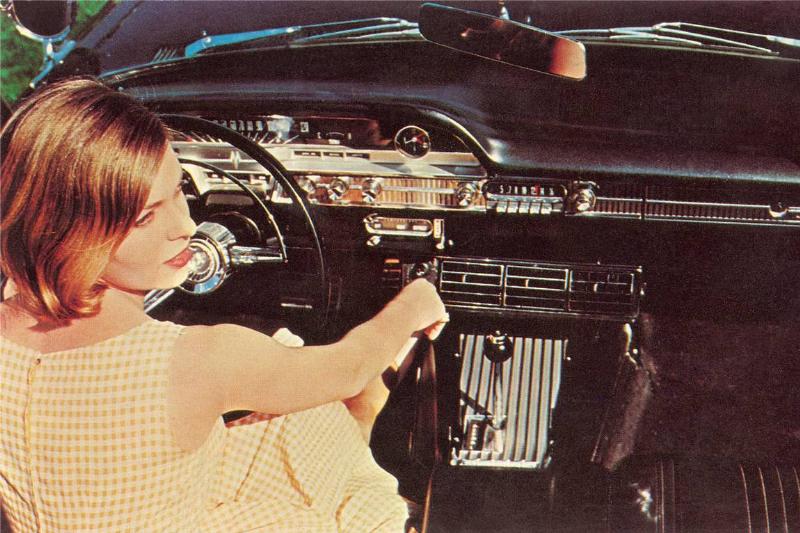
Source: Found Image Holdings/ Getty Images
Modern automatics bear little resemblance to those used in the first half of the twentieth century. In almost every regard, automatic transmissions have surpassed manual transmissions in today’s autos. Thanks to carefully adjusted gear aspect ratios, they shift faster, offer improved fuel efficiency, and lengthen the life of your engine.
Verdict: Myth
Tires should be replaced once the thread reaches 2/32, Myth or Truth?
It has been a common myth that tires should be replaced once the tread reaches 2/32. According to AAA, this is incorrect, as they found that tire performance in wet weather deteriorates significantly at 4/32. Therefore, it is suggested to buy new tires at this tread depth.

Source: Training Wheels Driving School
Your tires are the only thing keeping you connected to the road and driving with worn tires puts you at unnecessary risk for a crash, especially in wet weather.
Verdict: Myth
Changing the Brake Fluid Is Not Important, Myth or Truth?
According to AAA, 19% of respondents believe that brake fluid does not need to be changed. This is grossly untrue! Please take note. Most manufacturers recommend replacing brake fluid at two-or-three-year intervals.

Source: The Family Handyman
Brakes are the most important safety system on your vehicle. It is very important to schedule your required fluid changes, as brake fluid attracts and absorbs water which can then corrode internal brake system part which will lead to failure or other costly damage to your vehicle.
Verdict: Myth
Your Car Battery Can Last Up to Five Years, Myth or Truth?
A typical car battery lasts between 3-5 years (sometimes longer) however driving habits and climate greatly affect how long a battery can last.

Source: Bob Villa
According to AAA, 42% of people believed that a battery can automatically last five years, which is a dangerous assumption to find yourself on the other end of if it is wrong. The only way to truly know how much is left in your battery is to get it tested at the three-year mark.
Verdict: It’s complicated
Insurance is More Expensive for Red Cars, Myth or Truth?
According to InsuranceQuotes.com, 44% of Americans believe that red cars are more expensive to insure than other colors. This could be due to the color red’s association with boldness and passion in the west, but it’s difficult to say why so many people believe this misconception.

Bryan Mitchell/Getty Images
Insurance companies examine a variety of things when determining a rate. The age of the driver, the make of the car, the driver’s insurance history, and many other factors are considered. The color of an automobile has no bearing at all.
Verdict: It’s complicated
Nitrogen Is Better For Your Tires, Myth or Truth?
This isn’t actually a complete myth, but there is important information here. While there are advantages to having nitrogen in your tires (it leaks out more slowly over time compared to compressed air), you should be checking your tire pressure regularly enough that you shouldn’t have to pay extra money for nitrogen.

Source: brakeforit.com
If you don’t regularly check your tires, then nitrogen is probably a better call for you and your vehicle. Drains of air and refills with nitrogen on your current tires can cost up to $30 per tire.
Verdict: It’s complicated
You Never Need to Replace Your Coolant, Myth or Truth?
This myth comes with big consequences for you and your vehicle. Were you aware that 40% of all engine failures are caused by coolant system problems? If your coolant is left unchecked for too long it will begin to break down and develop rust which can cause corrosion in the cooling system and lead to engine issues.

Source: facebook
For those of us that heavily rely on our vehicles, it is recommended that testing for coolant be exercised at least twice a year– right before winter comes and again right before summer.
Verdict: Myth
Hiding Behind a Car During Gunfire Will Protect You, Myth or Truth?
Oftentimes in movies, we’ll see the protagonists hide behind a car to escape from oncoming gunfire. While some bullets may not be powerful enough to cut through steel, it is not a completely safe bet.

Source: facebook
Cars should not be considered cover, but as concealment. Here is hoping you never have to test this myth out, and if you do, take cover behind something else.
Verdict: It’s complicated
Toyota Prius Gets Worse Miles Per Gallon Than BMWs, Myth or Truth?
This myth stems from a 2009 episode on Top Gear that ran a test with a powerful BMW against a hybrid Prius on a track. The BMW got more miles per gallon than the prius, but there was a reason a lot of people seemed to forget.

Source: rebuu.us
The test was done on a track, a very specific condition, that allowed the M3 to be more efficient. The Prius was driving as fast as possible, while the BMW was merely keeping up. They were being driven very differently.
Verdict: It’s complicated
Muscle Cars Aren’t Good on Corners, Myth or Truth?
The understeer and overall poor handling of the old American muscle cars are legendary. In a drag race, a huge V8 engine combined with a lot of understeers was fast, but not on a turn.

Source: Gabe Ginsberg/FilmMagic
Fortunately, things have changed. The majority of new muscle cars with large V8 engines under the hood are faster than ever, around the track or in a straight line. The 2017 Dodge Viper ACR clocked a seven-minute lap around the Nürburgring, besting cars like the Nissan GTR Nismo and Porsche 991 GT3 RS!
Verdict: Myth
If You Shoot a Car’s Gas Tank It Will Explode, Myth or Truth?
In most Hollywood movies, a character will shoot at a car and a big explosion will take place. The idea is that the bullet is penetrating the gas tank and causing a righteous explosion.

Source: kumparan.com
Mythbusters tried it out to get to the bottom of this myth. The myth was found to be bunk when they put on an experiment. Still, don’t try this at home.
Verdict: Myth
The Journey Back is Shorter Than the Way There, Myth or Truth?
Although it can definitely feel like the way back is shorter than the way there, that doesn’t mean that it’s necessarily true. Time, wonder–such a mystery!

Source: wapblog.pro
There is a phenomenon that occurs called the ‘return trip effect’ which occurs when a person is impatient to get to a destination so they overestimate the time it took to get there while on the way. Being familiar with the route can also cause this to happen.
Verdict: Myth
Electric Cars Are a Fire Hazard, Myth or Truth?
Ready for science? While it is true that lithium ion batteries have wildly different fire characteristics than fossil fuel engines. If an electric car is on fire, it definitely does put out very poisonous fluoride gasses.
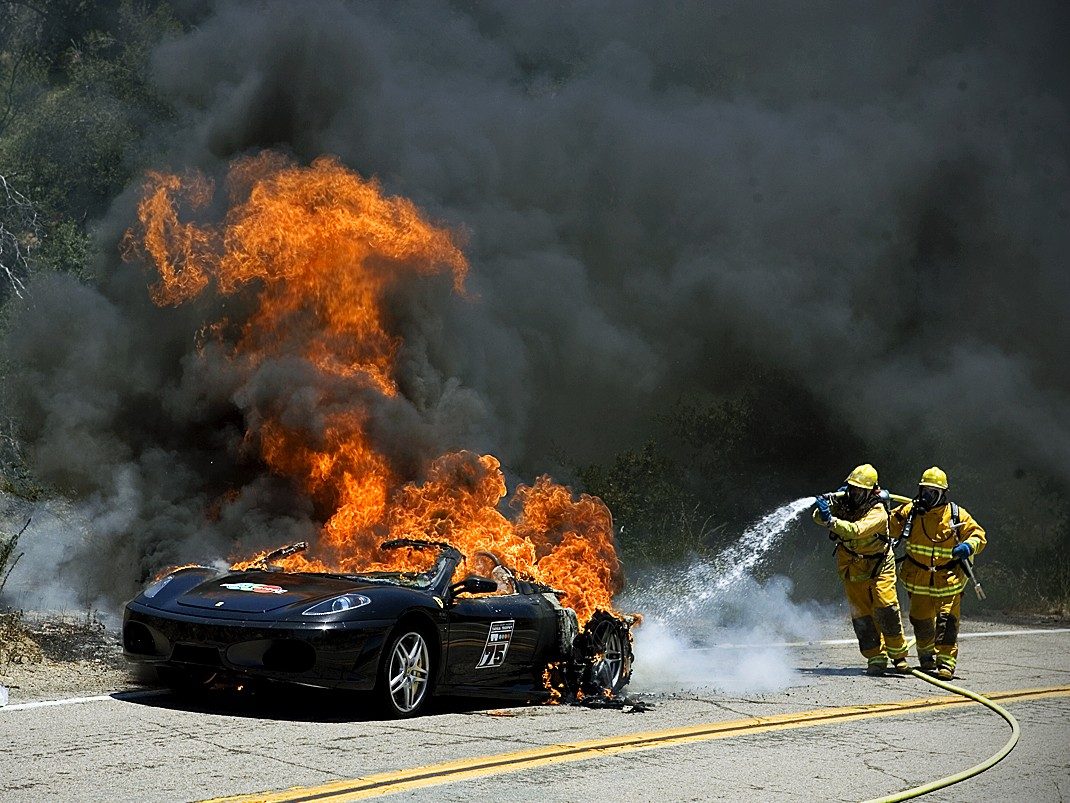
Source: deci.us
However, it takes a lot longer for the lithium battery to get there. This means that a person has a lot longer to get out of a car safely than a fossil fuel engine.
Verdict: Myth
Changing Lanes Get You There Faster, Myth or Truth?
While it may feel super relieving to switch lanes and get out that nervous energy while on the road, it may not be serving you in all the ways you’d like it to.

Source: videohive.net
Strangely enough, this urge to change lanes is not serving you. Studies have shown that all a person can see is the “rival” passing them and not the people getting smoked behind them. Point is: stay in your lane.
Verdict: Myth
Electric Cars Are More Expensive Than Fossil, Myth or Truth?
Another myth that many people believe is that electric cars are not as affordable as your average fossil car. On the one hand, there is truth to this. Batteries take up 30% of the cost in an electric car.

Source: basilresale.com
On the other hand, cars retain a lot longer residual value than fossil fuels. So in the long term where the price point is larger it can go the distance.
Verdict: Myth
Men Drive Better Than Women, Myth or Truth?
This myth likely comes from the status quo that has been chipped away with time. It has been the common belief that men do pretty much everything better than women, but what does the data tell us?

Source: twitter
The data tells us that there is no evidence to this claim, it’s complete nonsense, and we’ll add sexist too. We’re smarter than this, though.
Verdict: Myth
Richer Drivers Meaner, Myth or Truth?
We all have been on the highway when that person with the uber expensive car cuts us off, doesn’t use their blinker, or does something else entitled and rude. And by default some of us may say, “Ah, of course it’s a BMW!”

Source: tumblr.com
Well, according to a scientific study, this may be rooted in facts. Apparently, drivers in more expensive cars stop less often at pedestrian crossings as well as cut in front of others more often.
Verdict: Truth
Electric Cars Are Made With Polluting Minerals Mined By Children, Myth or Truth?
This is a mouthful of myth and is simply untrue! Electric car batteries are made of lithium that are composed of two main sources.

fool.com
Mines are one, but not the majority. Brine water (A.K.A.ocean water) and is not mined, and most especially not by children. Furthermore, there are tons of lithium reserves around the world.
Verdict: Myth
Electric Car Batteries Only Last a Few Years, Myth or Truth?
This is one of the most popular myths and is easy to prove as just that–a myth. For people are are charging their electric vehicles, they only charge it a few times a month. Compare this to an Iphone that is charged everyday.

Source: bostik-industrial.com
Looking at Tesla owners, data has shown that drivers of the new-age car showed only 10% average battery degradation after over 160,000 miles. Fossil cars are scrapped after that kind of mileage most of the time.
Verdict: It’s complicated
